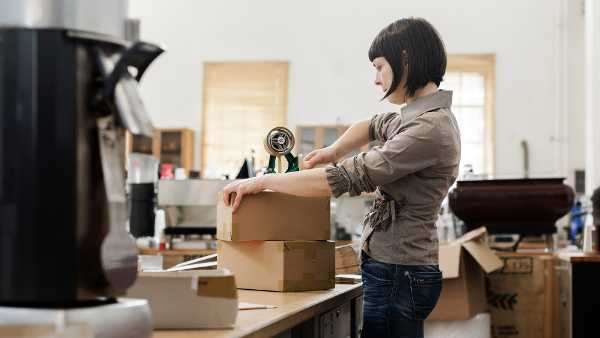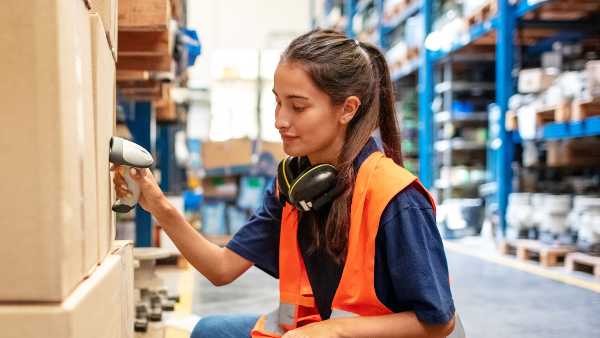Avoid double excise duty when exporting excise goods

- Marco van Hagen
- Background
- Edited 22 July 2024
- 6 min
- Managing and growing
- International
Excise is a national tax on excise goods, such as beer, petrol, and cigarettes. If you export excise goods, you pay excise duty in the Netherlands. Or your customer pays excise duty in their country. In this article, 2 excise specialists explain how to export excise goods and who pays the excise tax, because "‘without experience in exporting excisable goods, a mistake is easily made".
Excise goods are products that you trade or produce and for which you pay excise (in Dutch) to the Dutch government. Dutch Customs are responsible for collecting excise duty. You do not have to file a customs declaration when exporting excise goods to another EU country, but you do need a customs declaration for goods exported to non-EU countries.
Excise goods consist of 6 main product groups:
- beer (in Dutch)
- wine (in Dutch)
- intermediate products (in Dutch)
- miscellaneous alcoholic beverages (in Dutch)
- tobacco products (in Dutch)
- mineral oils (in Dutch).
Exporting duty-suspended and duty-paid excise goods
Excise goods can be exported in two ways: in duty suspension (schorsing van accijns) and as duty-paid goods.
Exporting goods in duty suspension
You do not pay any duties in the Netherlands nor does your customer pay duties upon receipt of the goods. Only when your customer resells or uses the excise goods do they pay the duties due in their own country. To move goods in duty suspension, you need a Registered Consignor Permit (vergunning geregistreerde afzender), and your customer needs an Excise Warehouse Permit (AGP) or an Registered Consignee Permit (vergunning geregistreerde geadresseerde).
Moving duty-paid excise goods
You pay excise duties in the Netherlands and your customer pays the duties due in the destination country upon arrival.
Exports within the EU
If you export goods to EU , you do not have to file an export declaration, but there are VAT and excise duty rules you have to observe. The key differences between moving duty-paid and duty-suspended excise goods are outlined below. Please note that different rules apply to B2B and B2C sales.
Supplying B2B suspended-duty excise goods
John Sampers, consultant with customs services provider SGS Maco, explains how to export suspended-duty excise goods within the EU.
-
"To supply another business with suspended-duty excise goods, your customer needs an Excise Warehouse permit (EWP, in Dutch) or a Registered Consignee permit and you need their permit number."
-
"Draw up an eAD and enter the permit number. Sign up the shipment in the Excise Movement and Control System (EMCS, in Dutch). You will then receive an Administrative Reference Code (ARC)."
Tax authorities may audit the shipment. "Provide the carrier with a printed version of the eAD or include the ARC on the transportation document or your sales invoice. These documents allow tax authorities to see who is responsible for paying excise duties."
Supplying B2B duty-paid excise goods
If your customer does not have an Excise Warehouse Permit or Registered Consignor Permit, you have to pay duties in the Netherlands. You can reclaim this later.
Do you have an Excise Warehouse Permit or Registered Consignor Permit? Then you first report the excisable goods via Mijn (in Dutch). Here, you list the quantity of excisable goods you export. After this, you pay excise duty to the Dutch Tax Administration. Without these permits, you have already paid the Dutch excise duty at the time you received the excisable goods.
After paying the Dutch excise duty, take the following steps:
-
Apply for a Registered Consignor Authorisation. Your customer in the other EU member state will need a Registered Consignee .
-
Register the shipment in the Excise Movement and Control System before departure.
-
In the EMCS you create a simplified electronic administrative document (eAD). Your customer receives this eAD digitally.
-
Your customer puts in the EMCS that they have received the shipment. You receive a notification of this.
-
With this notification you can reclaim the Dutch excise duty paid.
Supplying B2C duty-paid excise goods
Only companies are allowed to have an Excise Warehouse Permit or Registered Consignor Permit, which means you can never deliver duty-suspended excise goods to consumers.
“You have to pay duties in the EU country where you deliver excise goods to consumers,” Sampers says, “which means you will need a local tax representative (Dutch Customs, in Dutch).” The process is the same as for B2B duty-paid excise goods. “However, you will need to change the address label,” Sampers notes, “To the address of your tax representative. This will tell customs in the destination country that the excise duties have been paid.”
You may also arrange the excise duty payment yourself. You report to the authority in that EU and inform them that the shipment is coming. This notification obliges you to pay excise duty in that country, also known as 'providing security'.
Exports outside the EU
If you export outside the EU, you file an export declaration with the Dutch Customs Administration. Below you can read more about how to deliver suspended excise duty. And how to deliver excisable goods.
Delivering suspended excise duty supplies outside the EU is not difficult.
Exporting goods in duty suspension
Jörg Bruijn is an excise expert at Nedcargo, a logistics service provider specialising in beverage exports. He explains how to move excise goods in duty suspension: “Exporting suspended-duty excise goods outside the EU is easy.”
-
If you want to export excise goods suspended outside the EU, submit an electronic administrative document (eAD) to the Excise Movement and Control System (EMCS) (Belastingdienst, in Dutch) Select the ‘export destination’ . You will then get an Administrative Reference Code (ARC).
-
File an export declaration.
-
Mention the ARC number in your export declaration, along with your excise permit number. If you are using someone else's EWP, use the corresponding permit number.
-
Customs will sign off on your export declaration with a 'confirmation of exit' when your shipment leaves the EU. The next step is to report this confirmation of exit to Dutch Customs’ Central Excise Unit (in Dutch) in Emmen, which will then sign off on your eAD in EMCS.
Moving duty-paid excise goods
You do not need an eAD if you pay excise duties in the Netherlands, but you will have to file an export declaration or have a logistics service provider file one for you. You are allowed to reclaim paid excise duties.
Declaring goods in the destination country
Sometimes, as an exporter you also have to arrange matters with the Customs Administration in the destination country. This depends on the Incoterms® rule that you have agreed with your customer.
“We regularly come across exporters who commit to DDP Incoterm® delivery, which means you are responsible for importing the excise goods into your customer’s country,” Bruijn explains. “You are responsible for the import declaration and for paying import taxes such as import duties, VAT and excise duties in that country, which makes the export process a lot more difficult. Agreeing on a different Incoterm rule would make your customer responsible for importing the goods.”
Prevent misreporting
“‘Without experience in exporting excisable goods, a mistake is easily made,” Bruin cautions. “You might fill in your customs declaration incorrectly, for instance, or use the wrong commodity code with a DDP delivery that may cause you to pay too little excise duty.” Bringing in a logistics service provider with knowledge of excise laws is a good way to avoid problems with customs.
Help from logistics service provider
If you seek help from a logistics service provider with knowledge of excise legislation, you can avoid problems at Customs Administration of the Netherlands. You can find them through sector organisation FENEX (in Dutch).
Other documents
Different countries require different documents for the importation of excise goods. In addition to a sales invoice, some countries will request that you provide a document of origin or a certified copy of your invoice. Check the Access2Markets database to find out what documents you will need in the destination country and which product requirements apply.
Reclaiming paid duties
If you can only supply excisable goods, you pay Dutch excise duty. For example, because you do not have a permit. Your client then pays excise duty in their country. You can reclaim the Dutch excise duty you paid via Mijn Douane (in Dutch) to avoid paying double excise duty on your products. There is a statutory term (in Dutch) for reclaiming excise duty. It runs until 3 months after the quarter in which you delivered excisable goods.
Your excise duty refund will only be granted if you can prove that you paid the duties in the Netherlands. You can prove this by providing your part of the electronic administrative document (eAD) or your purchase invoice if you do not have an eAD.
Tip: When purchasing excise goods, have the supplier specify the excise duties separately on the invoice.


